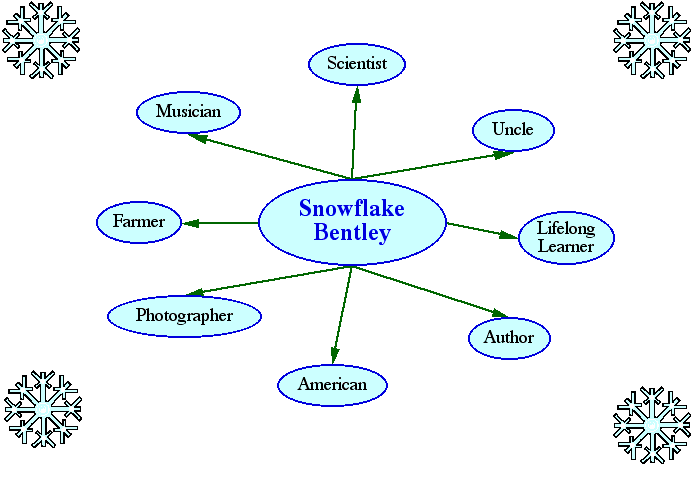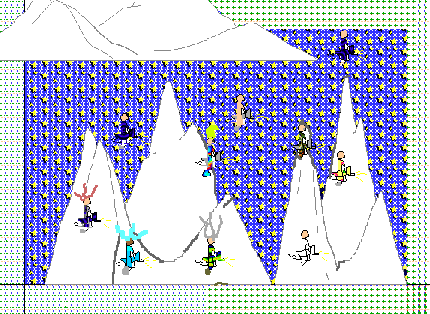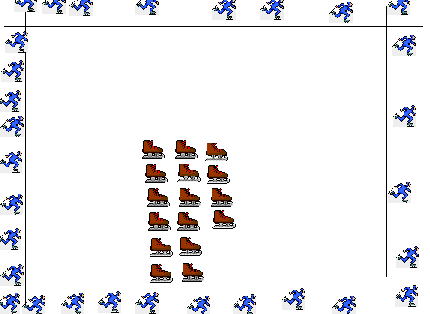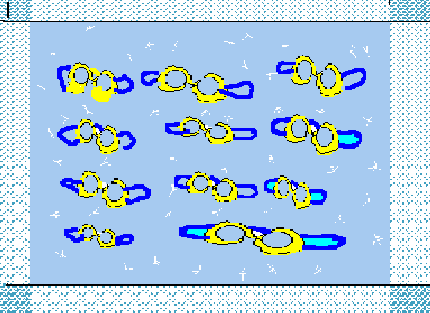| Students in 2K would like
to share what they have learned about an amazing man named Wilson
Bentley, a self-taught scientist who became an expert in the study of
snow and snowflakes.
We began our unit of study by reading the 1999 Caldecott Award winning book Snowflake Bentley by Jacqueline Briggs Martin. We learned that Wilson Bentley was the first person to ever photograph snowflakes by using a special camera which contained a microscope. Wilson Bentley thought that snowflakes were a very beautiful part of nature but felt that it was sad that no one had really seen a snowflake up close. He made it his life's work to study and photograph as many snowflakes as he could and that's how he got the name "Snowflake Bentley". We worked on a variety of activities to integrate the theme of snow and snowflakes into reading, writing, science, and technology. Our activities included reading and discussing a variety of fiction and nonfiction books about snow, writing individual poems and stories about snow, writing a class counting book titled A Snow Counting Book, collecting a list of interesting facts about snow, going outside to measure snowfall and snow temperature, using Kidspiration to create a web to review and organize what we have learned about Snowflake Bentley after we read his biography, and, of course, playing in the snow! Kidspiration
Outline
Writing Projects MAKING A SNOW ANGEL To make a snow angel, first you must dress warm. You need to wear snowpants, jacket, hat, gloves, and boots. Then you go outside and look for a good spot. Then you lay down and move your arms and legs at the same time. You move them like wings, like a bird. Then you're done! Just get up and walk away and look at your angel. COUNTING SNOWLAKES 1 snowflake falls on my
tongue SNOWFLAKE Snow
piles by the road. SNOWFLAKES Snowflakes
falling from the sky.
Science Snow Facts All snowflakes are different because they are made up of snow crystals that combine in different ways. Every snowflake began as a speck that is much too tiny to be seen by humans. Some snowflakes are wet and sticky while others are light, dry, and fluffy. It is never too cold to snow. Every snowflake has 6 sides. Snowflakes begin inside clouds. When the temperature goes down, there is less water vapor in the air so it is harder for snowflakes to form. There are six main snow crystal shapes - plate, stellar, column, needle, spatial dendrite, capped column - and each snowflake is made up of two of more of these snowflake building blocks. A snowflake is made up of one or many hundreds of crystals of ice. Scientists have been studying snowflakes for more than 400 years. Snow is good for all living things. Visit our web site for more Snowflake Bentley activities!
From The 2K Snow Counting Book
|





